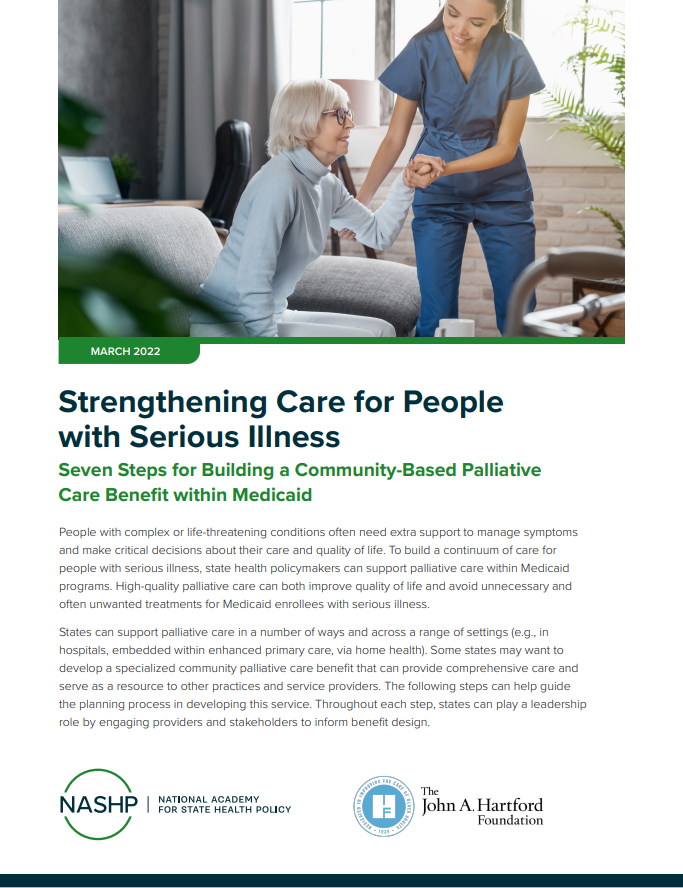Headline
This tool can be used to guide state policy planning for a community-based palliative care benefit in Medicaid.
Context
To improve quality of life and reduce avoidable acute care utilization for Medicaid enrollees with serious illness, state policymakers can strengthen services for this population by supporting the continuum of palliative care across different settings. This tool can be used to guide state policymakers in developing a community-based palliative care benefit in Medicaid.
About this Tool
The steps outlined in this tool include state options related to:
- Defining the target population;
- Estimating the utilization rate;
- Defining staffing and service standards;
- Developing Medicaid payment methodology;
- Identifying state Medicaid authority;
- Calculating net cost; and
- Identifying quality measures.
To help inform state decision-making, the tool provides links to examples and resources, such as measurement strategies and relevant cost estimates.
Takeaways
States can apply the evidence, guidelines, and examples in this tool along with stakeholder input to shape Medicaid benefit design for community-based palliative care.




